Welcome to your comprehensive guide on understanding what guitar chords are in G. Whether you’re a beginner or an intermediate player, this article is designed to help you master the chords in the key of G with ease and confidence. We’ll walk you through each chord, ensuring that you’ll be well-equipped to play them effortlessly.

Understanding the Key of G
The key of G holds a special place in music, particularly among guitarists, due to its rich and resonant sound. This key is often chosen for its ability to create a warm and full-bodied tone, making it a favorite for many songs across various genres.
It’s especially favorable for beginners because of its relative ease of play and the comfort it offers in chord transitions. To fully grasp what constitutes the key of G, it’s essential to look at its musical scale.
The G major scale is made up of seven notes: G, A, B, C, D, E, and F#. Each of these notes plays a critical role in defining the harmonic structure of the key. The presence of the F# note, in particular, gives the key of G its unique character, differentiating it from other major scales.
What Guitar Chords are in G? – Major Chords in the Key of G
Now, let’s show you how to play major chords in the key of G…
1. Playing the G Major Chord
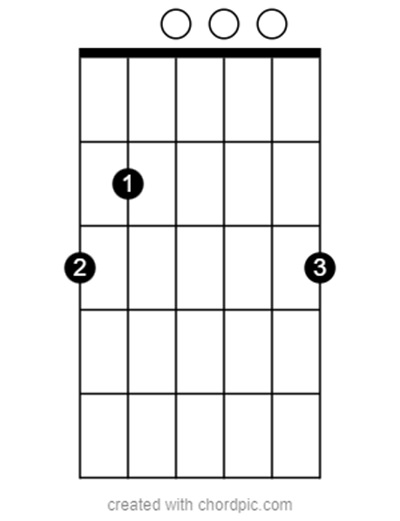
The G major chord is foundational within this key and is often one of the first chords learned by guitarists. Here’s a step-by-step guide to playing it:
Positioning Your Fingers: Start by placing your index finger on the second fret of the fifth string. This action lays down the foundation for the chord.
Adding the Middle Finger: Next, place your middle finger on the third fret of the sixth string. This finger placement is crucial as it defines the root note of the chord, which is G.
Completing the Chord: Finally, place your ring finger on the third fret of the first string. This step is vital as it adds depth to the chord’s sound, enriching its tonal quality.
Strumming the Chord: Once your fingers are in position, strum all six strings together. The combination of these string vibrations produces the full and resonant G major chord that is central to the key of G.
2. Playing the C Major Chord
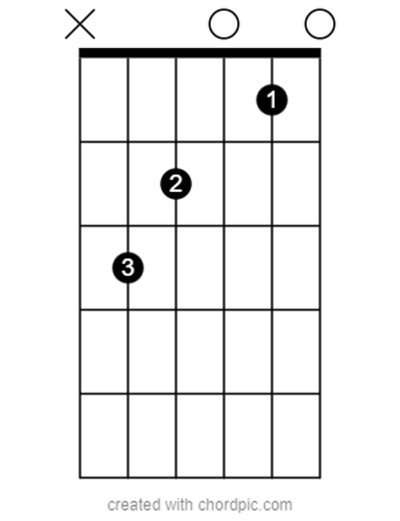
The C Major chord is another essential chord in the key of G, celebrated for its clear, uplifting sound. It’s a staple in many songs and is crucial for a guitarist’s chord repertoire. Here’s a guide to mastering the C Major chord:
Positioning the Ring Finger: Begin by placing your ring finger on the third fret of the fifth string. This finger placement is vital as it lays down the C note, the root of the chord.
Setting the Middle Finger: Next, position your middle finger on the second fret of the fourth string. This step is crucial in forming the chord’s structure, adding depth to the sound.
Completing the Chord with the Index Finger: Place your index finger on the first fret of the second string. This finger placement completes the chord, giving it its distinctive major quality.
Strumming the Chord: For the C Major chord, strum the bottom five strings. Be careful to avoid the sixth string, as its inclusion can distort the chord’s tonal purity.
The C Major chord, with its bright and resonant sound, is a cornerstone in many compositions, particularly in the key of G.
3. Playing the D Major Chord
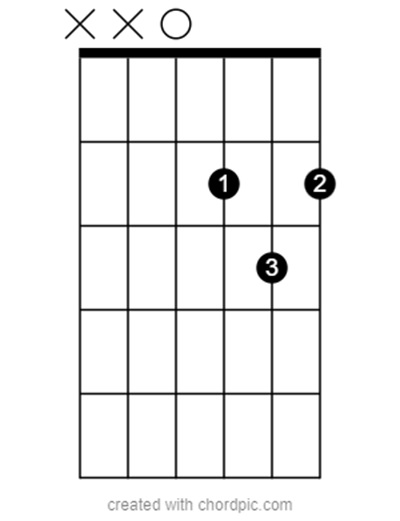
The D Major chord is known for its bright, ringing sound. It’s a key chord in many songs and is particularly prominent in the key of G. Here’s how to play it:
Placing the Index Finger: Start by putting your index finger on the second fret of the third string. This finger lays the foundation for the chord.
Adding the Ring Finger: Place your ring finger on the third fret of the second string. This step is crucial as it shapes the chord’s harmonic structure.
Completing the Chord with the Middle Finger: Finally, put your middle finger on the second fret of the first string. This placement is essential for achieving the distinctive sound of the D Major chord.
Strumming the Chord: Strum the bottom four strings to play the D Major chord. It’s important to only strum these strings to maintain the chord’s clarity and brightness.
Read more on guitars here – Common Guitar Questions: Guide to “What” Guitar Questions
What Guitar Chords are in G? – Minor Chords in the Key of G
Now, let’s show you how to play minor chords in the key of G…
1. Playing the E Minor Chord
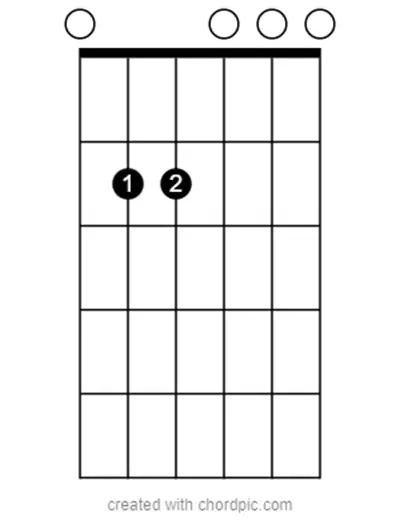
The E Minor chord is a fundamental chord in the key of G, known for its deep, emotional resonance. It’s relatively easy to play, making it a favorite among beginners and seasoned guitarists alike. Here’s how you can master the E Minor chord:
Positioning the Middle Finger: Begin by placing your middle finger on the second fret of the fifth string. This finger is crucial for laying down the base note of the chord.
Adding the Ring Finger: Next, put your ring finger on the second fret of the fourth string. This step is essential in completing the chord’s structure and achieving its melancholic sound.
Strumming the Chord: For the E Minor chord, strum all six strings. This allows each string to resonate, contributing to the chord’s full, rich tone.
Playing the E Minor chord correctly will give you a sense of its emotional depth and versatility in various musical contexts, particularly within the key of G.
2. Playing the A Minor Chord
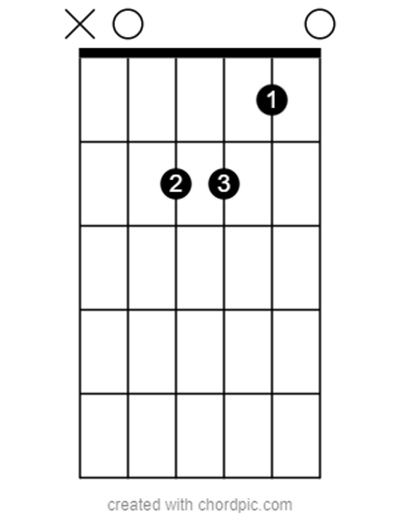
The A Minor chord is another crucial chord in the key of G, characterized by its somber yet beautiful sound. It’s widely used across various music genres for its expressive quality. Here’s your step-by-step guide to playing the A Minor chord:
Setting the Middle Finger: Start with your middle finger on the second fret of the fourth string. This finger placement is vital for establishing the chord’s foundation.
Placing the Ring Finger: Position your ring finger on the second fret of the third string. This step is key in shaping the chord’s harmonic structure.
Completing the Chord with the Index Finger: Place your index finger on the first fret of the second string. This final step is essential in defining the A Minor chord’s distinct sound.
Strumming the Chord: Strum the bottom five strings to play the A Minor chord. Be careful to avoid the sixth string to preserve the chord’s clarity and tonal quality.
What Guitar Chords are in G? – Seventh Chords in the Key of G
Now, let’s show you how to play seventh chords in the key of G…
1. Playing the G7 Chord
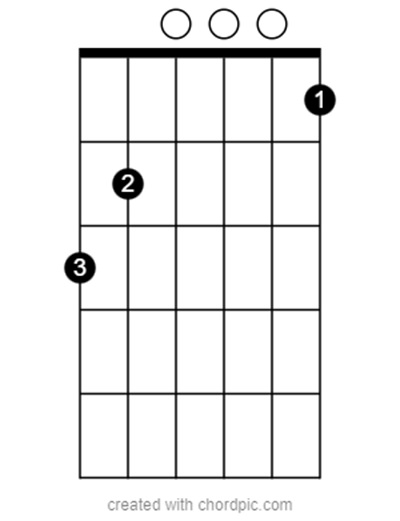
The G7 chord, a dominant seventh chord, is integral in the key of G, known for adding a sense of tension and resolution in music. It’s a slightly more advanced chord but is vital for a well-rounded understanding of guitar playing in the key of G. Here’s a detailed guide to mastering the G7 chord:
Starting with the Index Finger: Begin by placing your index finger on the first fret of the first string. This finger lays down the high note of the chord, which is essential for the distinctive seventh sound.
Positioning the Middle Finger: Next, place your middle finger on the second fret of the fifth string. This step adds depth to the chord and anchors its harmonic structure.
Adding the Ring Finger: Now, put your ring finger on the third fret of the sixth string. This is crucial for establishing the chord’s bass note, giving the G7 its full, resonant quality.
Strumming the Chord: To play the G7 chord, strum all six strings. This allows the combination of notes to blend, creating the chord’s characteristic tension that seeks resolution, a unique aspect of the G7’s charm.
2. G Major 7 (Gmaj7)
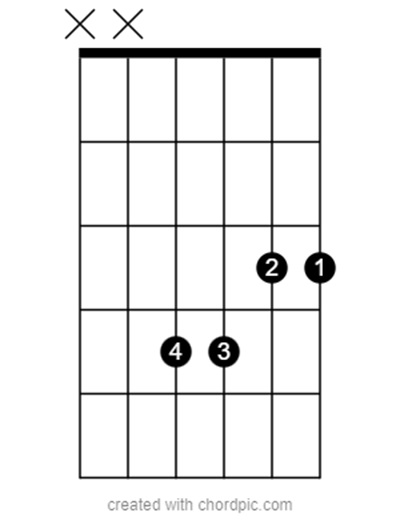
The G major 7, also a chord in the key of G is a bit different from the G7 chord (G dominant 7). The seventh note in the G7 chord is flattened. So while the G7 chord may sound unresolved, the Gmaj7 chord has a happy tone to it.
Index Finger: Place your index finger on the third fret of the high E string (1st string). This note is G.
Middle Finger: Put your middle finger on the third fret of the B string (2nd string). This note is D.
Ring Finger: Place your ring finger on the fourth fret of the G string (3rd string). This note is B.
Pinky Finger: Place your pinky on the fourth fret of the D string (4th string). This note is F#.
Strumming: Strum from the D string (4th string) downwards. Avoid playing the A (5th) and low E (6th) strings for this chord.
3. A Minor 7 (Am7)
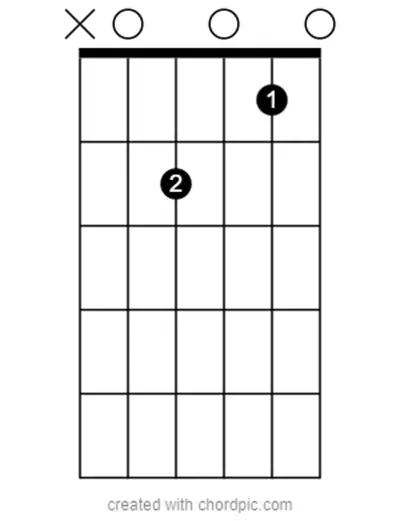
Index Finger: Place it gently on the 1st fret of the 2nd string (B string). Ensure it’s close to the fret without being directly on top of it, as this helps to produce a clearer sound.
Middle Finger: Place it on the 2nd fret of the 4th string (D string). Again, position it close to the fret. The placement should feel comfortable, with your finger arching slightly over the other strings.
Strumming the Chord: Strum from the 5th string (A string) downwards using either a pick or your thumb. The 6th string (E string) should not be played in this chord.
Strum with a relaxed wrist, moving smoothly to create an even sound across the strings.
4. B Minor 7 (Bm7)
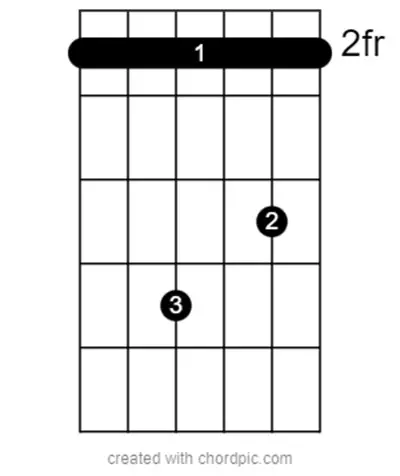
Index Finger: Use your index finger to create a barre across all six strings at the second fret. This technique might require some practice to ensure all strings ring clearly.
Ring Finger: Place your ring finger on the fourth fret of the fourth string, which is normally tuned to D. This will produce an F# note.
Middle Finger: Position your middle finger on the third fret of the second string. This string is usually tuned to B, and pressing on the third fret will produce a D note.
Strumming: Strum all six strings. This full strumming will bring out the complete and melancholic sound of the Bm7 chord.
5. C Major 7 (Cmaj7)
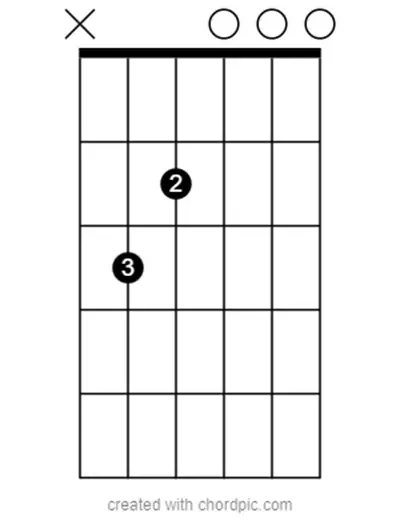
Ring Finger: Place it on the third fret of the fifth string, which is the C note. This is the root note of the chord.
Middle Finger: Position it on the second fret of the fourth string, hitting the E note. This adds to the major seventh sound.
Strumming: Strum from the fifth string downwards. It’s important to leave the first string (high E) open, as this adds to the major seventh quality of the chord. This open string approach creates a fuller and more resonant sound.
6. D Dominant 7 (D7)
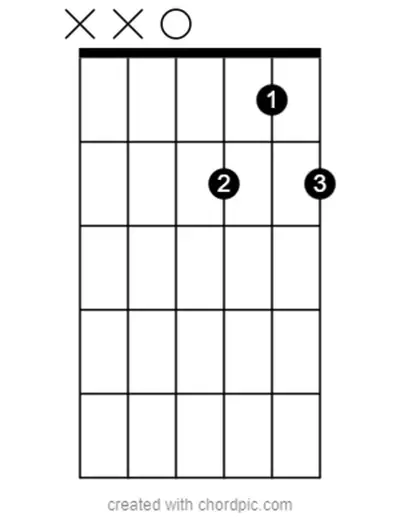
Index Finger: Place it on the first fret of the second string, producing the C note, which is essential for the dominant seventh sound.
Middle Finger: Position it on the second fret of the third string, striking the A note.
Ring Finger: Position it on the second fret of the first string, hitting the D note, reinforcing the root of the chord.
Strumming: Focus on strumming the bottom four strings. This helps to emphasize the specific qualities of the D7 chord, providing a crisp and clear dominant seventh sound.
7. E Minor 7 (Em7)
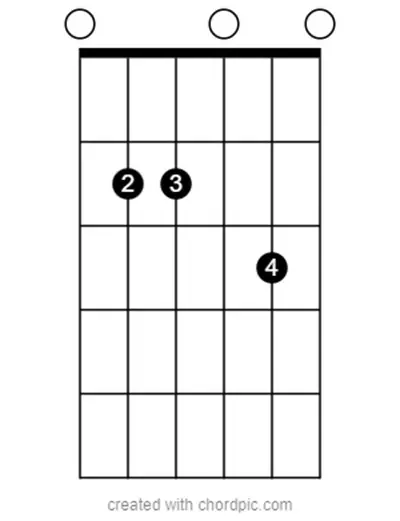
Middle Finger: Place it on the second fret of the fifth string, accessing the B note.
Ring Finger: Position it on the second fret of the fourth string, hitting the E note, which is the root of the chord.
Pinky Finger: To transform this into an Em7 chord, you should add your pinky finger on the third fret of the second string (D). This note (D) is the seventh of the E Minor scale and gives the chord its ‘minor 7th’ quality.
Strumming: Strum all six strings. This allows for the full richness of the E minor 7 chord to be heard, emphasizing both the minor and seventh aspects.
8. F# Minor 7 Flat 5 (F#m7♭5)
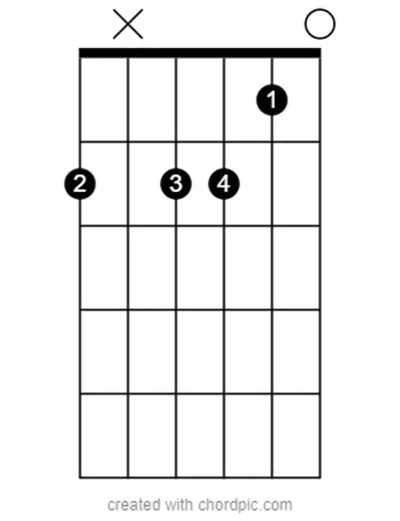
Index Finger: Place it on the first fret of the second string (C). This is the diminished fifth of the chord.
Middle Finger: Position it on the second fret of the sixth string (F#), which is the root note of the chord.
Ring Finger: Place it on the second fret of the fourth string (E), which is the minor seventh of the chord.
Pinky Finger: Place it on the second fret of the third string (A), representing the minor third of the chord.
In this voicing, the first string (high E) is not played, and the fifth string (A) can be muted or avoided. Strum the four strings where your fingers are placed (second, third, fourth, and sixth strings), ensuring a clear representation of the chord’s essential tones.
Conclusion: What Guitar Chords are in G?
Mastering guitar chords in G is a fundamental skill for any guitarist. With practice and patience, these chords will become second nature. Remember, every guitarist starts somewhere, and with each chord you learn, you’re one step closer to becoming the musician you aspire to be.